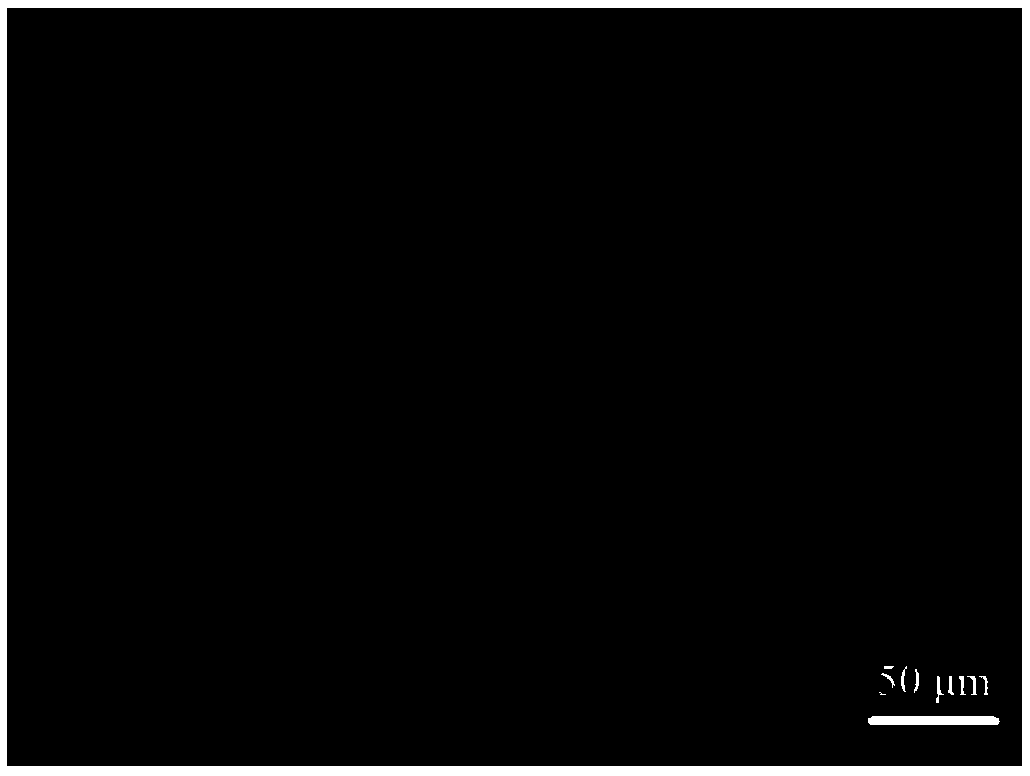Spherical degreasing cotton cellulose particle and applications thereof
A technology of absorbent cotton cellulose and absorbent cotton, applied in the field of daily chemical products, can solve problems such as affecting the human body and skin scratches
- Summary
- Abstract
- Description
- Claims
- Application Information
AI Technical Summary
Problems solved by technology
Method used
Image
Examples
Embodiment 1
[0026] Take 100g of absorbent cotton (dry) and soak it in 1.0L of 16% sodium hydroxide aqueous solution at room temperature for 2 hours, filter it with suction and squeeze out the excess sodium hydroxide solution to obtain 300g of alkali cellulose (pressing ratio 3:1). Shred into thin strips, age at room temperature for 7 days, then add 25mL of carbon disulfide, shake at room temperature with a speed-regulating oscillator at 200 times / min for 2h, add 800mL of 5% sodium hydroxide aqueous solution, and stir at room temperature for 6h to obtain sulfonation Cellulose viscose. Then add 3L of liquid paraffin and 30g of potassium oleate, stir at 250rpm for 1h, then react at 80°C for 1.5h, then filter with suction and wash with hot water at about 85°C until white, and the particle size distribution is 110-180μm. The spherical cellulose particles accounting for more than 80% are passed through a 100-200 mesh sieve to obtain the white spherical absorbent cotton cellulose particles used ...
Embodiment 2
[0028] Take 100g of absorbent cotton (dry) and soak it in 1.2L of 18% sodium hydroxide aqueous solution at room temperature for 2 hours, filter it with suction and squeeze out the excess sodium hydroxide solution to obtain 500g of alkali cellulose (pressing ratio 5:1). Shred into thin strips, age at room temperature for 7 days, then add 50mL of carbon disulfide, shake at room temperature with a speed-regulating oscillator at 200 times / min for 2h, add 1L of 6% sodium hydroxide aqueous solution, stir at room temperature for 6h to obtain sulfonation Cellulose viscose. Then add 5L of liquid paraffin and 40g of potassium oleate, stir at 250rpm for 1h, then react at 90°C for 1h, then filter with suction and wash with hot water at about 85°C until white, and the particle size distribution in the range of 70-180μm can be obtained. More than 80% of the spherical cellulose particles are passed through a 100-200 mesh sieve to obtain the white spherical absorbent cotton cellulose particle...
Embodiment 3
[0030] Take 100g of absorbent cotton (dry) and soak in 2.0L of 18% sodium hydroxide aqueous solution at room temperature for 5 hours, suction filter and squeeze out the excess sodium hydroxide solution to obtain 500g of alkali cellulose (pressing ratio 5:1), and the alkali cellulose Shred into thin strips, age at room temperature for 15 days, then add 75mL of carbon disulfide, shake at room temperature with a speed-adjusting oscillator at 200 times / min for 5h, add 1.2L of 7% sodium hydroxide aqueous solution, and stir at room temperature for 8h to obtain sulfonium Chemicalized cellulose viscose. Then add 5L liquid paraffin, 70g potassium oleate, stir at 500rpm for 1h, then react at 90°C for 0.5h, then filter with suction and wash with hot water at about 85°C until white, and the particle size distribution is 70-100μm. The spherical cellulose particles accounting for more than 80% are passed through a 100-200 mesh sieve to obtain the white spherical absorbent cotton cellulose p...
PUM
| Property | Measurement | Unit |
|---|---|---|
| particle diameter | aaaaa | aaaaa |
Abstract
Description
Claims
Application Information
 Login to View More
Login to View More - R&D
- Intellectual Property
- Life Sciences
- Materials
- Tech Scout
- Unparalleled Data Quality
- Higher Quality Content
- 60% Fewer Hallucinations
Browse by: Latest US Patents, China's latest patents, Technical Efficacy Thesaurus, Application Domain, Technology Topic, Popular Technical Reports.
© 2025 PatSnap. All rights reserved.Legal|Privacy policy|Modern Slavery Act Transparency Statement|Sitemap|About US| Contact US: help@patsnap.com



